Malachites are known as the kings of the sunbird species.
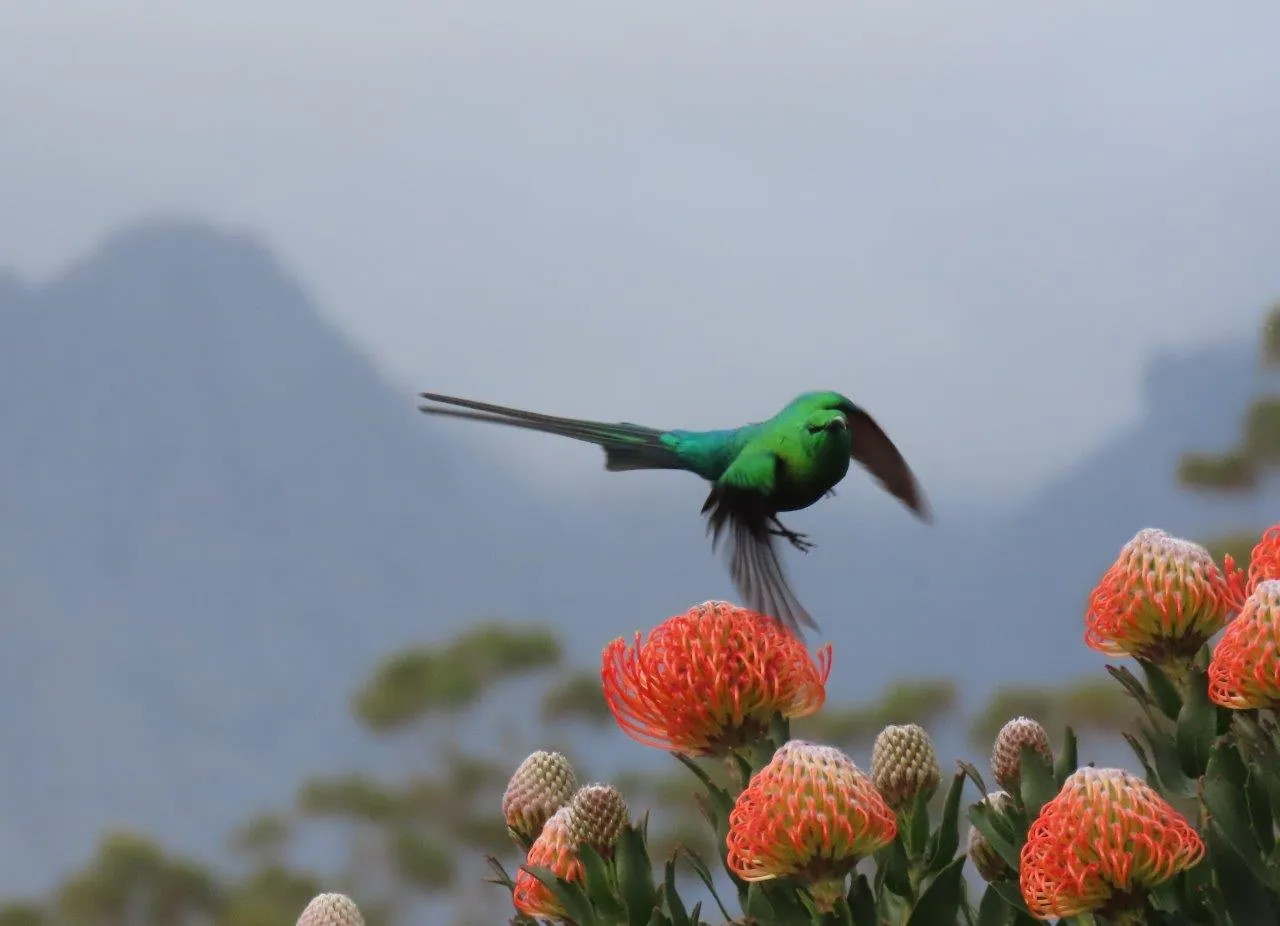
First up above is a Malachite in full flight.
The malachite sunbird (Nectarinia famosa) is a small nectarivorous bird found from the highlands of Ethiopia southwards to South Africa. They pollinate many flowering plants, particularly those with long corolla tubes, in the Fynbos.
The sunbirds are a group of small Old World passerine birds, and are placed within the family Nectariniidae, which is found across Africa, the Middle East and into South-east Asia. Also called green sugarbird.
The malachite sunbird has two subspecies. The nominate N. f. famosa occurs mainly in South Africa, Lesotho and western Eswatini, although its range just extends into southern Namibia and Zimbabwe. N. f. cupreonitens breeds in the highlands from Ethiopia south to northern Mozambique.
I have a Malachite couple, (as what would a man be without his woman?), for you today on some different colored protea pincushion flowers.
So come and take a look.
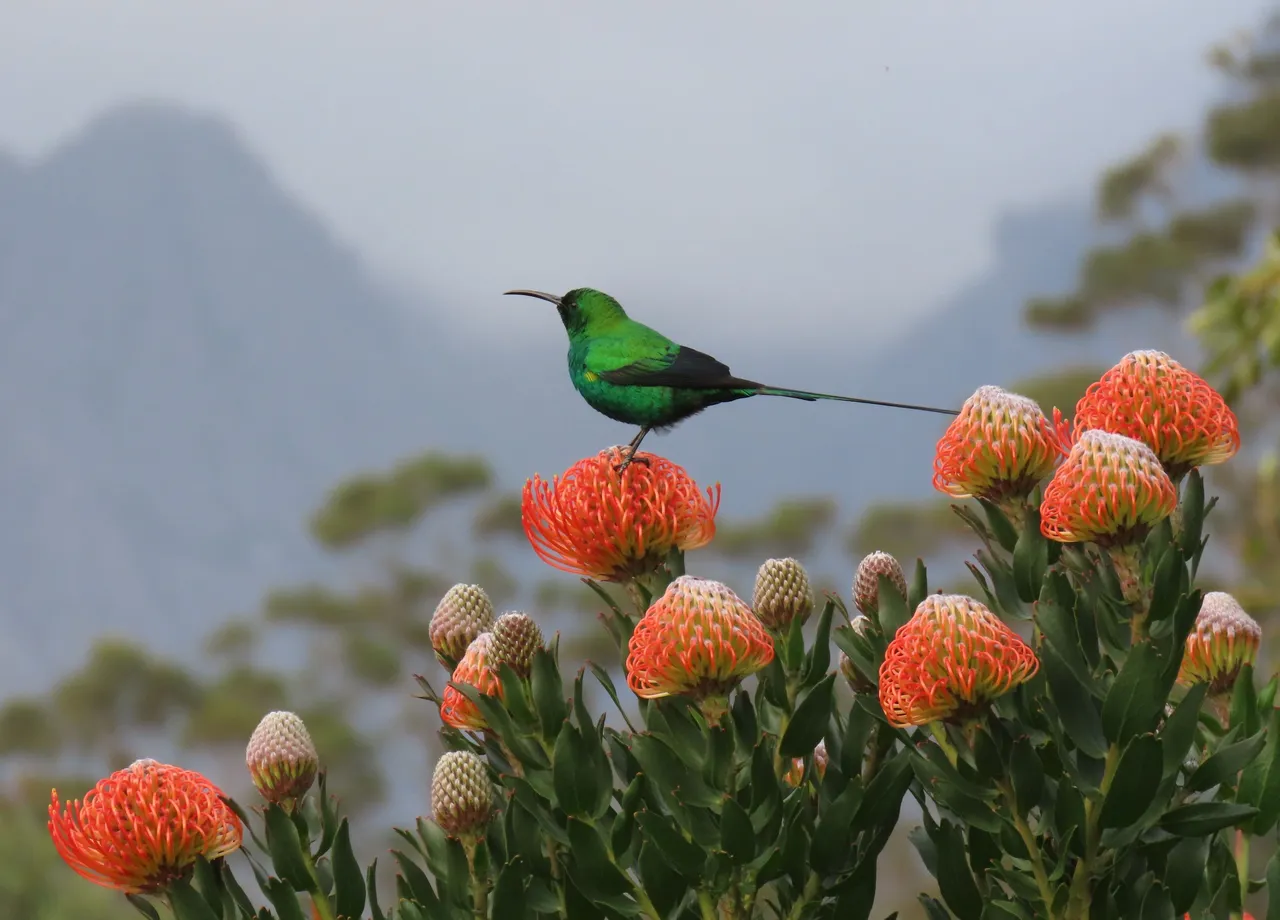
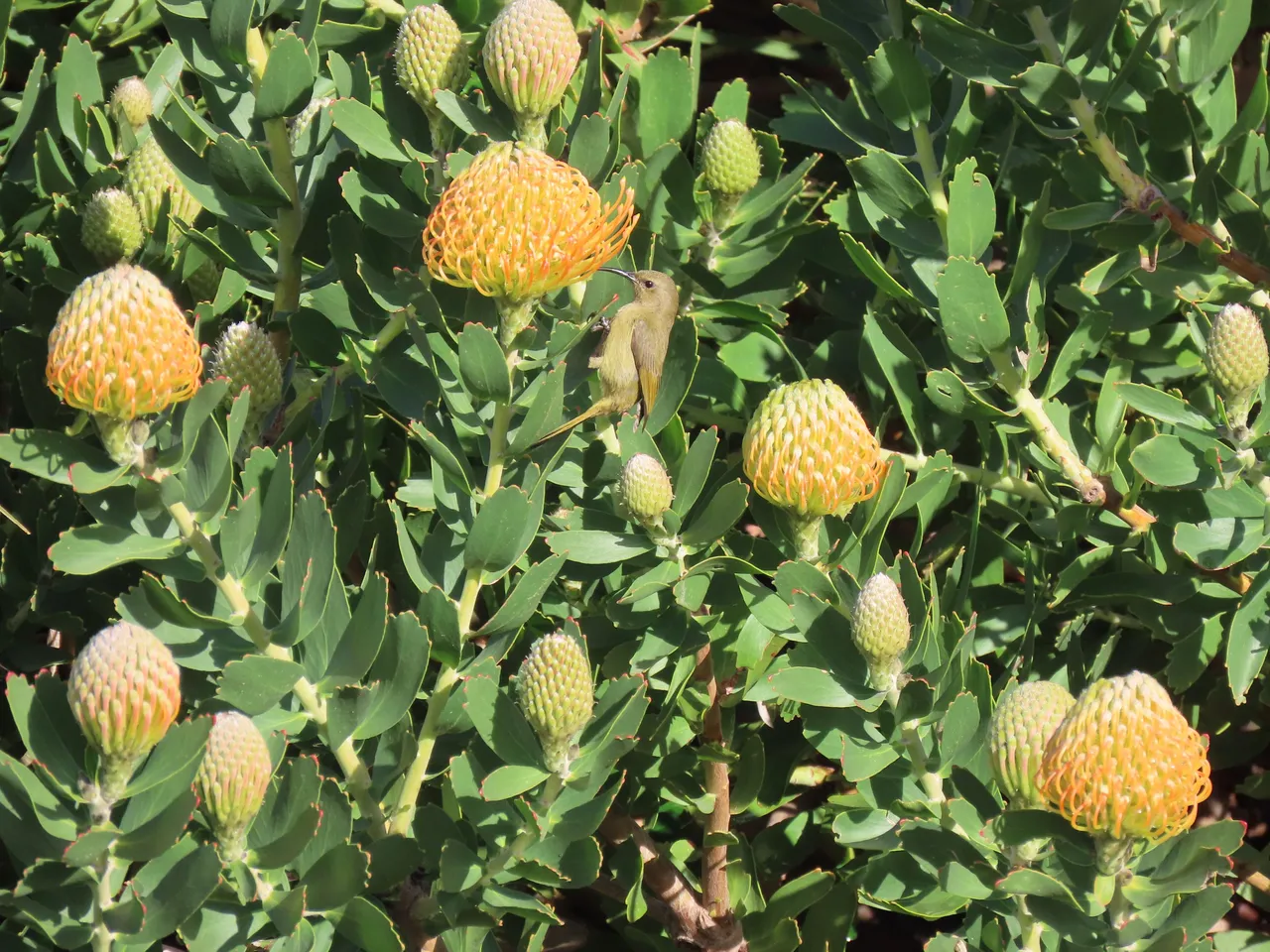
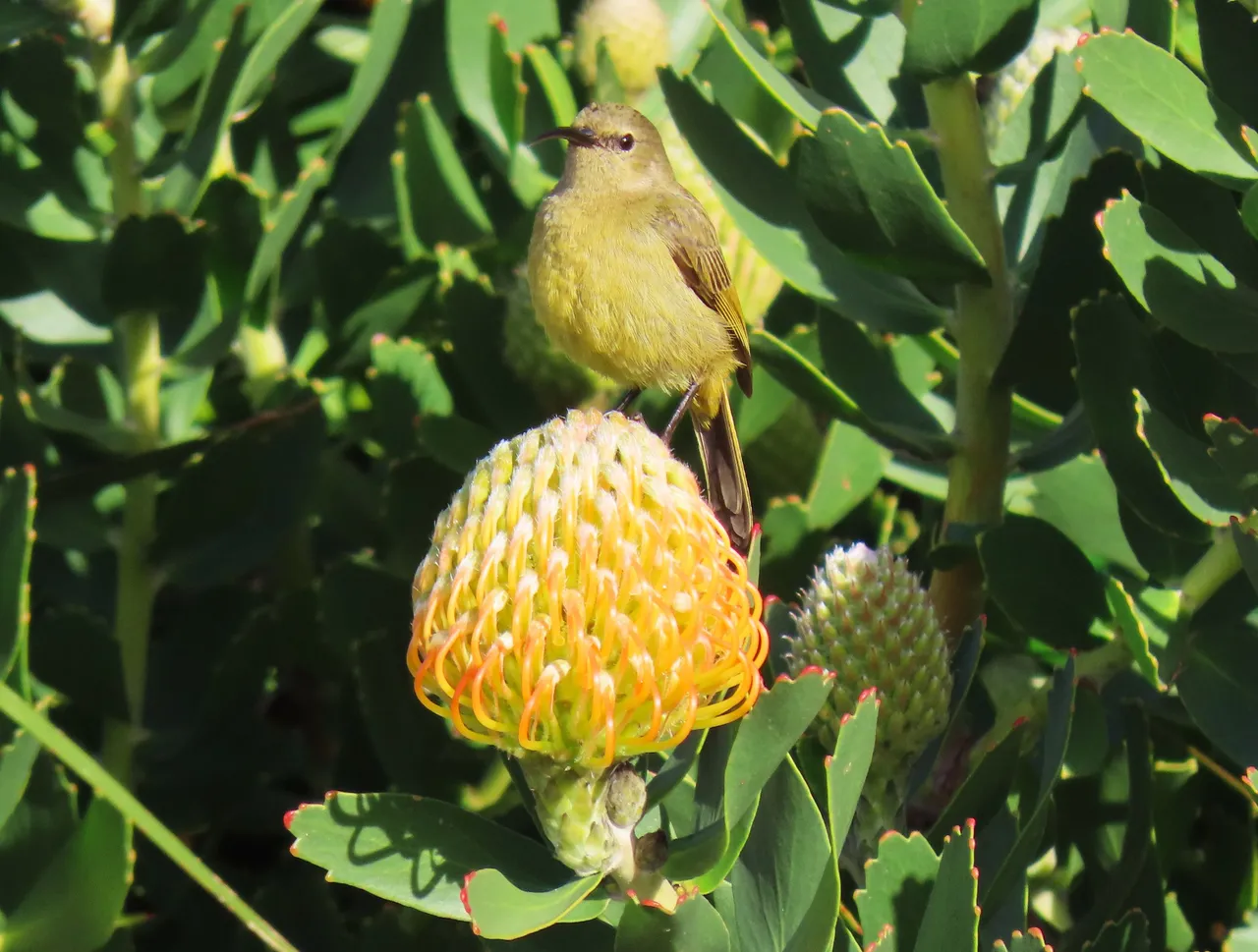
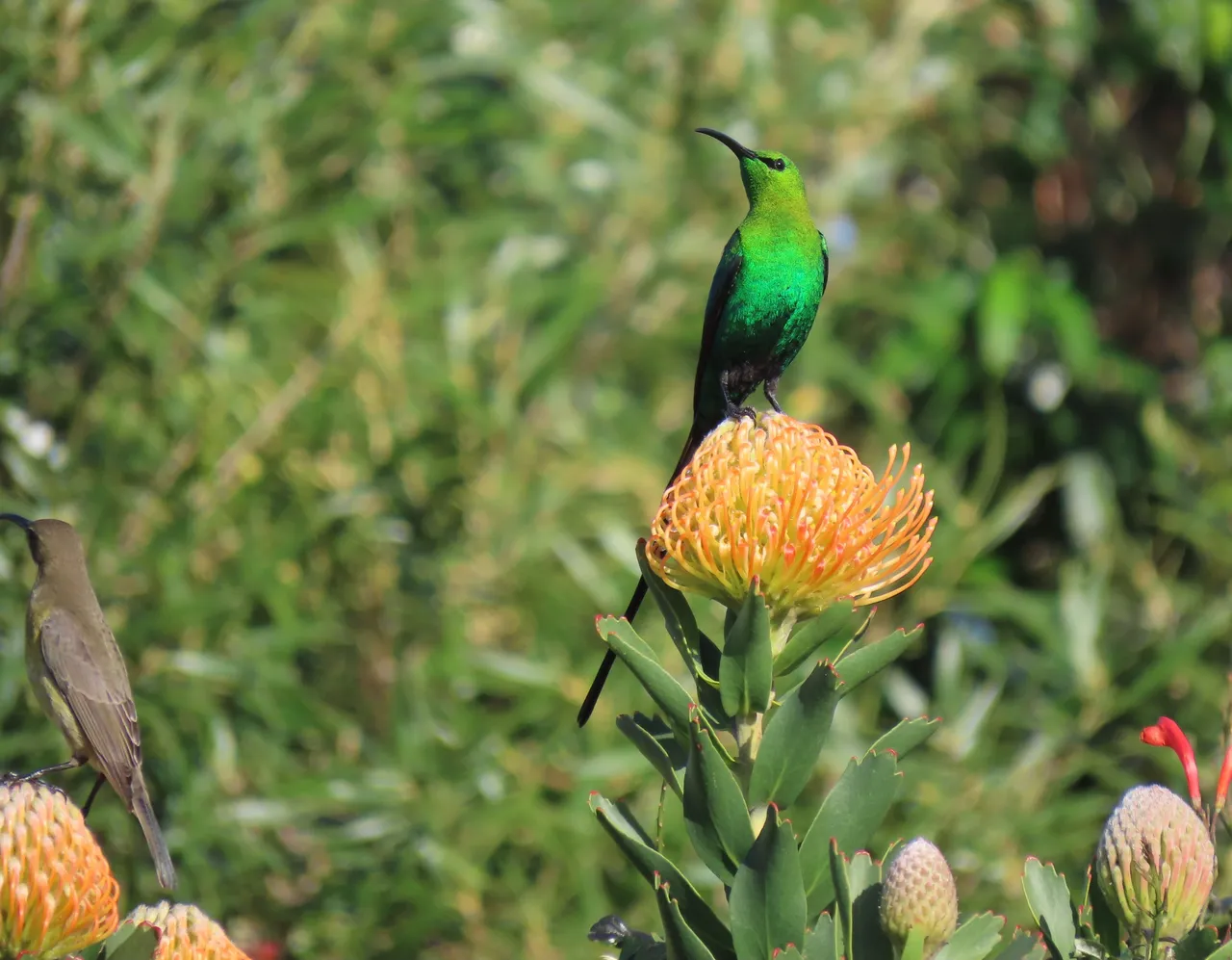
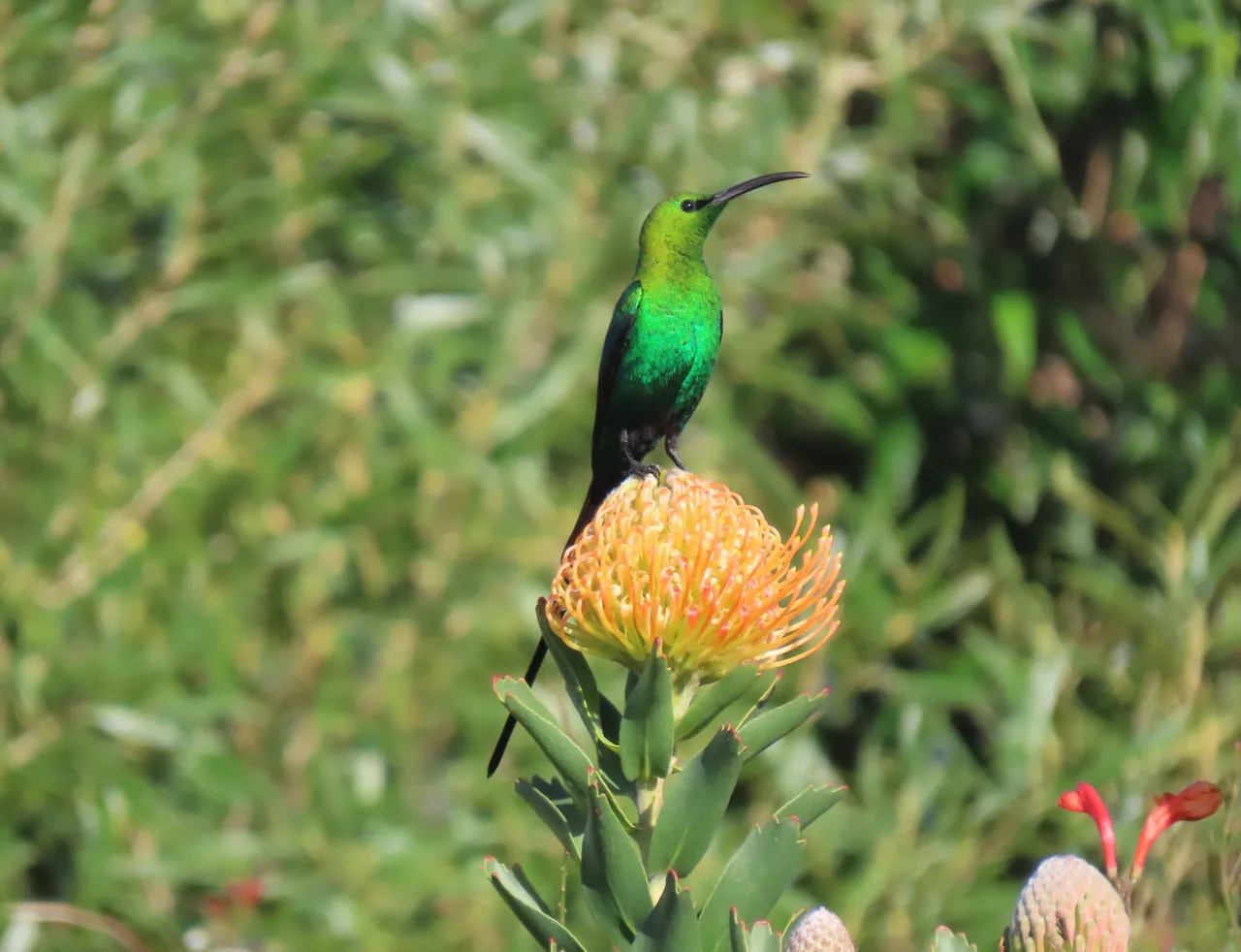
Now okay, now we are back to the red protea pincushions.
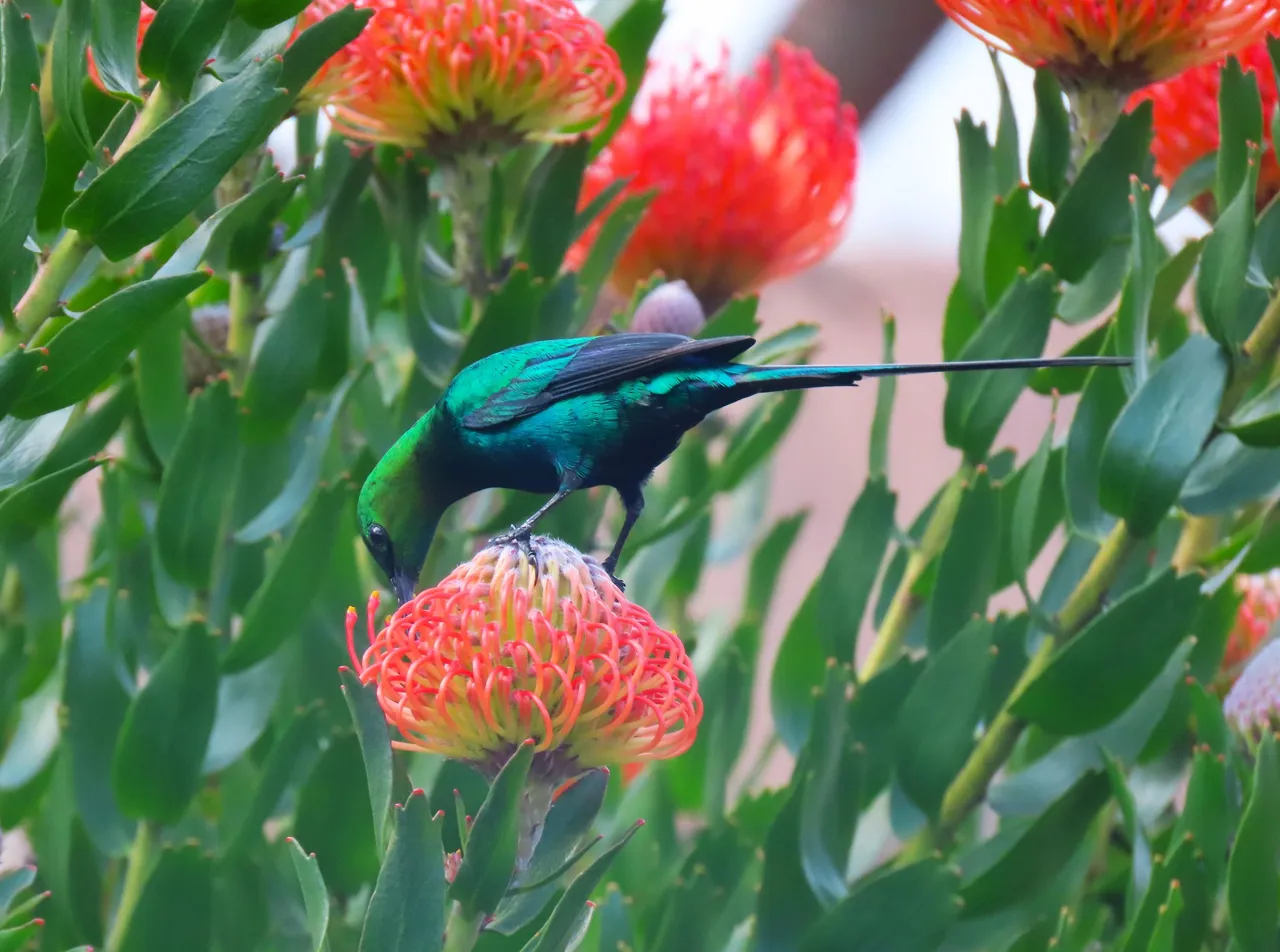
And of course, the Malachite wife sitting on an Aloe.
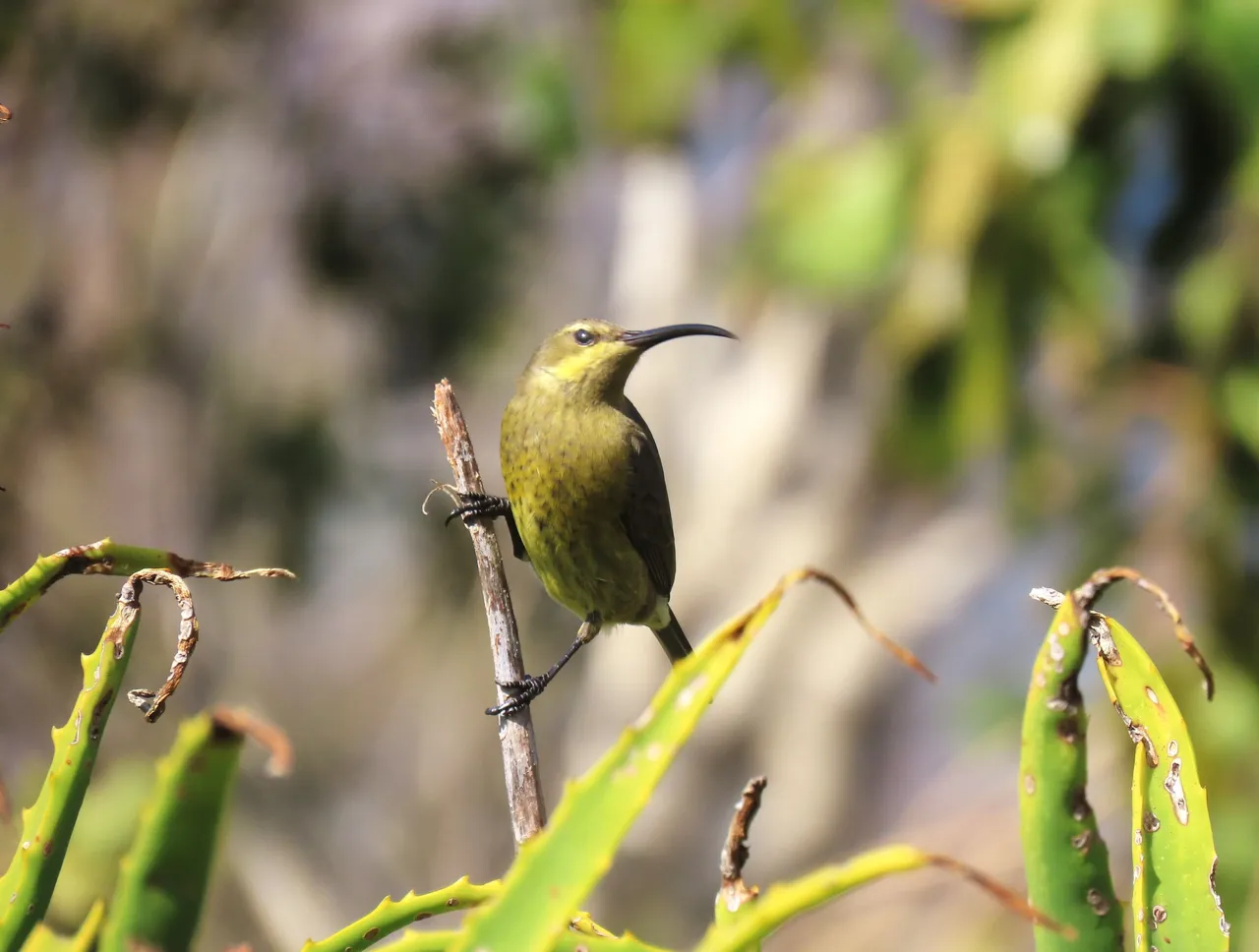
And here, below, I will show you that I found their nest with the mom inside it. A great thing is, that their nest is very similar to the Southern Double-collared sunbirds nest, but the head of the Malachite mom and the color of the mom is bigger and more colorful.
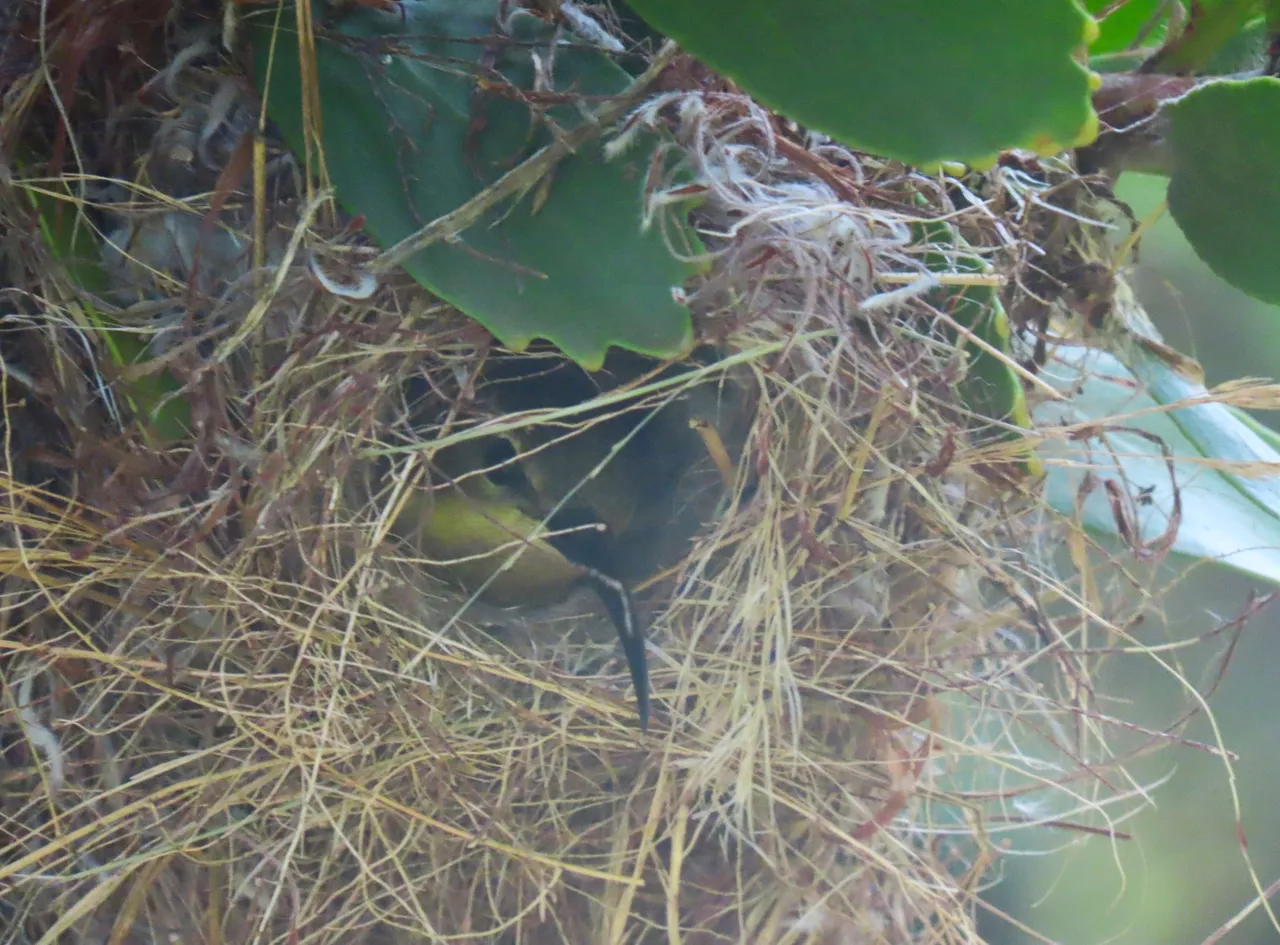
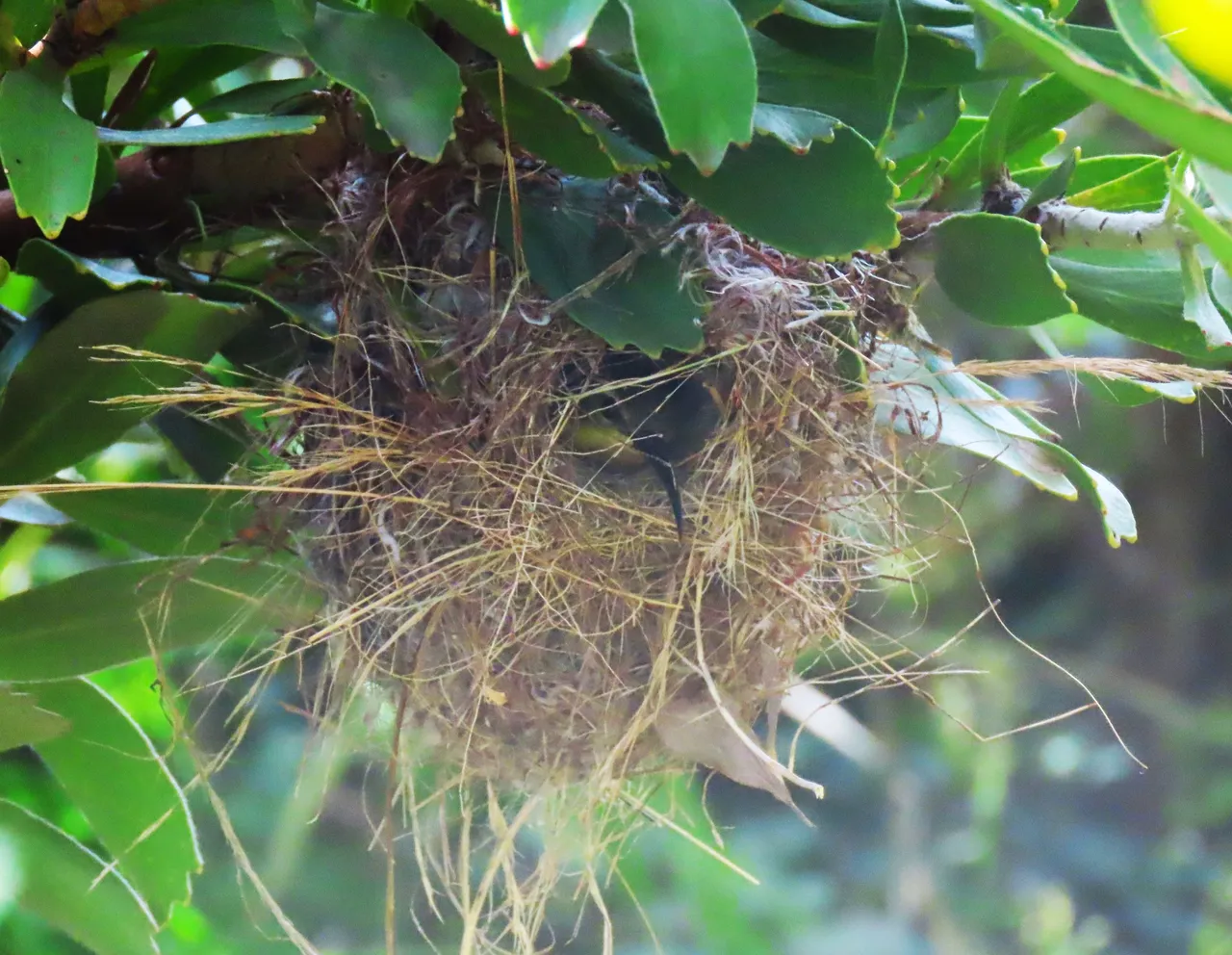
I didn't want to spoil the pictures with a lot of words in captions, as I want nature to tell you your own story about the wonders in here. We see them quite often in the late winter season, and they are clever enough to know that spring is a few weeks away, so the babies will have the spring and summer period to build up their strength before the next winter. Birds react on instinct, as I will show you in another post how cute a little baby bird cleans out her own nest to make space for her. When they are eggs, the nest is full of soft stuff and stuff, but as soon as they get a few days old, the next nest starts to become cramped, so the baby will take the soft stuff and put it at the entrance so that the mom can take it away. The mom then flies far away from the nest, to drop the soft stuff in order for predators not to notice that there is a nest.
Such is nature.
I hope you have enjoyed the pictures and the story.
Photos by Zac Smith-All Rights Reserved.
Camera: Canon PowershotSX70HS Bridge camera.
Thank you kindly for supporting this post.